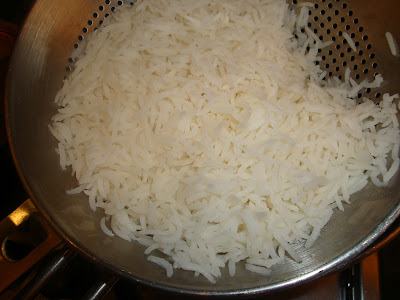There is something that is both financially and spiritually rewarding from using up leftovers. The propensity to use what many people would just bin has become somewhat of an obsession. We smile, smugly in our seats each night as we slurp the remnants of the previous day's ingredients.
This weekend was spent celebrating the first birthday of our second son, Kasper. All sorts of relatives came round to coo over our little scion amidst much devouring of food and guzzling of elixirs. As a result of this little soiree we had around 300-400g of rather tasty roasted beef left over. We had some, cold in sandwiches with English mustard on Sunday night and this was most flavoursome. The remaining hunk I decided to finely dice and make a chile con carne out of (the recipe for which you will find on this post)
http://swlsk.blogspot.co.uk/2012/03/voodo-o-chile-chile-con-carne-alongside.html
 | |
| Chile con carne |
As previously mentioned, the addition of beans to a chile is deemed incongruous by Mexicans, who seem to be rather exacting as to who this dish should be prepared. This is a perfect example of a regional dish which over time and much Anglicization has become rather bastardized.
We most frequently use kidney beans for our chile's in this house (and, I suspect, so do you too, if you make this), however I have become rather open-minded as far as which beans can be utilized. Last night, for example, I used cannelini beans (which work rather well). You can even pop a can of baked beans, wash off most of the viscous sauce, and use the remaining haricot beans.
I thought I'd give a quick precis as to how I cook and prepare my basmati rice. It is very easy to get fluffy, individually-grained rice, cooked to perfection with the minimum of fuss. Here's how I do it:
Fluffy Basmati Rice
- Take out however much rice you deem in requirement for your dish. Put it into a saucepan.
- Wash the rice, at least once in cold running water. The goal here is to remove some of the excess starch and rice powder.
- Fill the saucepan with enough water to cover it by 2cm.
- Bring to a slow simmer.
- After about 6 or 7 minutes, test it by eating a few grains. If it seems "not quite but almost ready" drain it into a sieve.
- Stick the sieve back over the saucepan and settle a lid over the top. Allow to steam.
- When you are ready to serve, fork the rice a little to separate the grains. Be gentle.

No comments:
Post a Comment